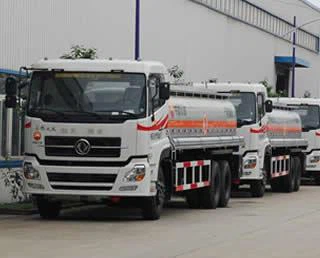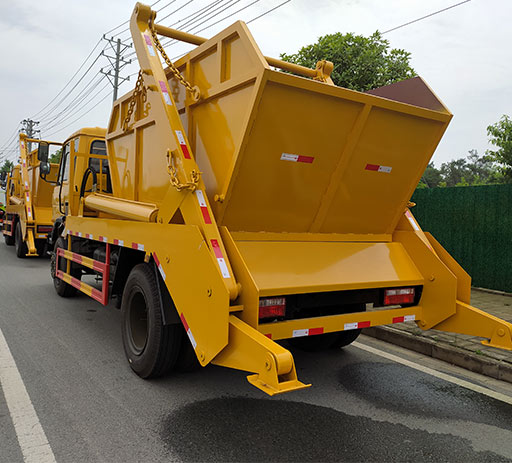LED Advertising Truck: Revolutionizing Mobile Marketing

Introduction
In today’s fast-paced advertising landscape, brands are seeking innovative ways to stand out from the competition. One such method gaining immense popularity is the LED advertising truck. These mobile billboards offer a dynamic and eye-catching way to convey messages to potential customers on the move. This article will delve into the intricacies of LED advertising trucks, covering their benefits, operational mechanics, and practical tips for effective use.
What is an LED Advertising Truck?
LED advertising trucks are vehicles equipped with large digital screens that display advertisements. Unlike traditional billboards, these trucks can move throughout a targeted area, providing advertisers the flexibility to engage audiences wherever they are. The vibrant LED displays can showcase high-resolution images, videos, and animations that attract attention more effectively than static displays.
Features of LED Advertising Trucks
- Mobility: They can travel to high-traffic areas, events, or neighborhoods, maximizing exposure.
- High Visibility: Bright LED screens ensure advertisements are seen even in broad daylight.
- Customizability: Content can be easily updated based on location, time of day, or current promotions.
- Interactive Capabilities: Incorporate QR codes or social media prompts for consumer engagement.
Benefits of Using LED Advertising Trucks
1. High Engagement Rates
The interactive nature of LED screens garners higher engagement rates. Research suggests that dynamic content captures attention far more effectively than static images, resulting in increased interaction with the advertised message.
2. Targeted Advertising
Advertisers can position LED trucks in specific locations to reach their desired audience. This allows brands to tailor their marketing efforts to different demographics by traveling to events, festivals, or urban areas with high foot traffic.
3. Cost-Effectiveness
While LED advertising trucks might require a higher upfront investment compared to traditional billboards, they can prove to be more cost-effective in the long run. The ability to reach diverse audiences without the need for multiple static billboards can lower overall marketing costs.
4. Real-Time Content Updates
One of the significant advantages is the ability to change content on the fly. Brands can display real-time promotions, such as flash sales or event updates, allowing them to react quickly to market changes.
How LED Advertising Trucks Work
The Technical Components
LED advertising trucks are equipped with several key components that enable their functionality:
- LED Screens: High-resolution displays capable of showcasing digital content effectively.
- Control Systems: Software and hardware designed to manage the content being displayed.
- GPS Tracking: Allows advertisers to plan routes and target specific areas.
- Power Supply: These trucks are typically fitted with generators or connected to the vehicle’s power system.
Operational Mechanics
The operation of LED advertising trucks involves coordinated efforts between drivers and marketing teams. Here’s how it typically works:
- Content Creation: Advertisers design the engaging visual content to be displayed.
- Route Planning: Determine the most effective routes based on target demographics and event scheduling.
- Execution: The driver positions the truck in strategic locations while the marketing team manages content updates.
Practical Examples of LED Advertising Trucks
Case Studies
| Brand | Campaign Type | Location | Result |
|---|---|---|---|
| Coca-Cola | Holiday Campaign | City Center | Increased foot traffic to event by 30% |
| Nike | Product Launch | Sports Exhibition | Boosted online engagement by 50% |
| Uber Eats | Promotional Offer | College Campus | Sales lifted by 40% during campaign |
Tips for Effective Use

- Know Your Audience: Tailor content based on the demographic you aim to reach.
- Timing Matters: Deploy your ads at peak times for maximum visibility.
- Engagement Techniques: Utilize prompts such as QR codes to interact with potential customers.
- Analyze Performance: Track responses and engagement to refine future campaigns.
Regulations and Compliance
Understanding Local Laws

Before launching an LED advertising truck campaign, businesses must be aware of local regulations regarding mobile advertising. Different cities and states may have specific guidelines about where and when these trucks can operate. Failure to comply can lead to fines or campaigns being shut down.
Best Practices for Compliance
- Research local advertising ordinances.
- Consult with legal professionals when planning your campaign.
- Secure necessary permits and licenses.
The Future of LED Advertising Trucks
Technological Innovations
The future of LED advertising trucks appears promising, thanks to rapid advancements in technology. We can expect features such as:
- Augmented Reality (AR): Integrating AR into advertising campaigns to enhance consumer experiences.
- AI-Driven Targeting: Utilizing machine learning to analyze data for better targeting and content personalization.
- Eco-Friendly Options: Development of energy-efficient vehicles and solar-powered displays.

Market Trends
The trend towards mobile advertising is likely to continue growing as businesses seek new ways to connect with consumers. Social media integration and interactive campaigns will become increasingly vital for brands looking to enhance consumer engagement.
Cost Analysis of LED Advertising Trucks
Investment Breakdown
Understanding the costs associated with LED advertising trucks is crucial for businesses considering this advertising medium. Here’s a breakdown of typical expenses:
| Expense Category | Estimated Cost |
|---|---|
| Purchase or Lease of Truck | $50,000 – $200,000 |
| LED Screen Installation | $20,000 – $100,000 |
| Content Creation and Management | $5,000 – $15,000 |
| Permits and Licensing | $500 – $2,000 |
| Fuel and Operational Costs | Varies by campaign |
Return on Investment (ROI)
The ROI for LED advertising trucks can be tracked through metrics like increased foot traffic, sales conversions, and brand awareness. Advertising firms must measure these factors to justify the initial investment and improve future advertising strategies.
FAQ
1. How do I book an LED advertising truck for my campaign?
You can book an LED advertising truck by contacting a mobile advertising company that specializes in this service. They can help you design your campaign and plan the logistics involved.
2. Are there any restrictions on where LED advertising trucks can operate?
Yes, restrictions vary by location. Make sure to research local ordinances regarding mobile advertising to ensure compliance.
3. What kind of content can I display on an LED truck?
You can display a variety of content, including promotional videos, static images, event announcements, and interactive elements like QR codes.
4. How do I measure the effectiveness of my LED truck campaign?
You can measure effectiveness through tracking metrics like engagement rates, foot traffic increase, and sales conversions during the campaign period.
5. Is it necessary to have a professional team to manage the truck’s content?
While it’s not mandatory, having a professional team can help optimize campaigns, ensuring that content is engaging and timely, ultimately leading to better results.
6. Can LED advertising trucks be used for public service announcements?
Yes, many organizations use LED advertising trucks for public service announcements, as their visibility can effectively spread important messages to the community.
